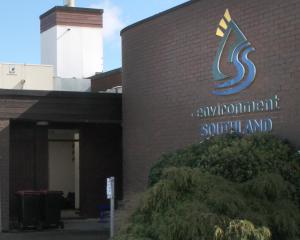
The Contact Energy-backed Slopedown wind farm, near Wyndham in Southland, was turned down for consent by an Environment Protection Authority-appointed panel in March this year.
Contact Energy appealed that decision to the High Court and also applied for the proposal to be approved through the government’s new fast-track legislation.
The fast-track legislation had referred the project and has now moved into the next phase, which will include a meeting of key parties over who would sit on the panel and how long the decision should take.
This meeting included the applicant, territorial authorities, mana whenua and government agencies such as the Minister for the Environment and the Department of Conservation. They were seen as statutory participants in the meeting, under the fast-track legislation.
The West Catlins Preservation Society had been a vocal critic of the wind farm and was thrilled when it was turned down.
But the society admitted now the chances of the project not going ahead were "pretty slim".
Society spokesman Dean Rabbidge said it had received a couple of "vague" letters from the fast-track process.
"We’re the collateral damage now, unfortunately, I think. It’s insulting, really. We’ll keep fighting as much as we can, but, yeah, we don’t have bottomless pits of money like these guys do."
He understood the government’s need for more energy, but wind was inefficient and other countries were turning against it.
"All around the world, countries have chased the mythical net zero using lots of wind turbines and solar as their main energy sources and their energy prices have become unaffordable.
"We’ve already seen a lot of industry shut down, especially in the North Island due to high energy prices. That’s not going to stop if they continue going down this wind and solar path.
"We need to be talking hydro if we want to go renewable. Especially when we need the power in the winter, that’s when generally it’s not as windy. So I just don’t get it."
The likes of United States had stopped building wind farms as was Australia and Europe, he said."
He said if Contact Energy had any integrity it would have accepted the March decision and moved on.
A community fund valued at more than $4 million for the length of the consent offered as mitigation by Contact Energy was called "insulting" by Mr Rabbidge.
"Over 35 years, so it’s about $100,000 a year. It should be $1 million a year. You adjust that for inflation over time and divide that by the number of people in the community.
"That’s the value they place on their community, and we value it much more than that."
In its application to the fast-track process, Contact said it did not agree with the decision to decline the wind farm and there were compelling grounds for its approval.
The power company had done additional mapping focusing on the Jedburgh Plateau since the rejection of the proposal. It was now even more confident in the accuracy of the vegetation mapping on the plateau.
Contact Energy would fund intensive pest control over a 10,000ha area in the Beresford Range for the life of the project to compensate for the residual potential effects on long-tailed bats.
The turbine lighting required by the Civil Aviation Authority for aircraft safety was reduced from lights on all 55 turbines to lights on only 16 turbines.













